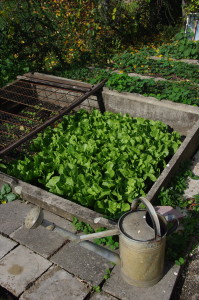 Do the retired 4-star General Stanley McChrystal and the retired CEOs Alan Mulally of Ford and John Chambers of Cisco fit the definition of a “heroic leader”?
Do the retired 4-star General Stanley McChrystal and the retired CEOs Alan Mulally of Ford and John Chambers of Cisco fit the definition of a “heroic leader”?
Yes, if you’re clinging to the past.
No, if you’re living in the present and anticipating the future.
In his new book, Team of Teams: New Rules of Engagement for a Complex World, General McChrystal and his writing partners make a compelling case for acknowledging that the heroic leader—whether an active or retired general or CEO—is an outdated phenomenon.
The way the world works no longer can support the heroic leader who thinks he has all the answers and can swoop in and save the day for his employees, customers and stakeholders.
The speed, interdependence and volume of information that complex organizations must deal with is too great for one individual to handle.
McChrystal maintains that leaders don’t have enough brain power to sift through all the data and moving parts to understand complex situations, make decisions and predict what will happen. And based on my applied neuroscience studies, I agree.
For too long, we’ve romanticized heroic leaders as savvy, successful chess masters—plotting strategic moves on their own and more recently, with the help of computing power.
It’s time for a new metaphor.
Leaders need to switch not just games but also professions. McChrystal says leaders need to view themselves as gardeners now.
Using the “leader as gardener” metaphor, gardeners tend rather than control.
Gardeners select the best crops for the environment, plant and cultivate, including pruning, shaping and harvesting.
In an organization setting, leaders as gardeners nurture the people, inspect and adjust the structure and processes and shape the culture. The people—a la the plants in the gardening metaphor—have the motivation, ability and responsibility to act and flourish.
As described in my last blog post, Adapt with radical info sharing and empowered execution, when a retired four-star general recommends making sweeping changes in how leaders act, especially around radically sharing information and pushing decisions down in the organization, we need to pay attention.
We also need to take actions to blossom as leader-gardeners.
Here are 10 suggested actions with special emphasis on improving information sharing. These include steps General McChrystal took, as well those I regularly suggest to my clients:
- Set priorities, clearly articulate them and explicitly reinforce them regularly.
- Remove barriers so individuals can better focus on the priorities. (This also means not adding any new priorities, unless you remove or scale back on the current ones.)
- Show interest and enthusiasm in the priorities and the people, including what people are doing to meet the priorities.
- Keep information flowing around the organization.
- Encourage conversations.
- Listen to diverse voices.
- Thank people for their actions.
- Meet people face-to-face, including looking into their eyes to build trust.
- Explain the “why,” not just the “what” and “how.”
- Lead by example.
To be a successful gardener, you need to go where the crops grow and get your hands dirty, literally and figuratively. Leaders need to be out in the fields, not cloistered in a protected setting.
Good gardeners and farmers—certainly those in my family tree—spent and spend a significant amount of time on the land cultivating their crops. Furthermore, they persevere through changes in weather, bugs and other possible adversities.
While gardening is an ancient vocation, it’s a very fitting metaphor for leaders who serve in today’s VUCA (volatile, uncertain, complex and ambiguous) world.
Thank you, General McChrystal!
Are you ready to be lead like a gardener?

good content